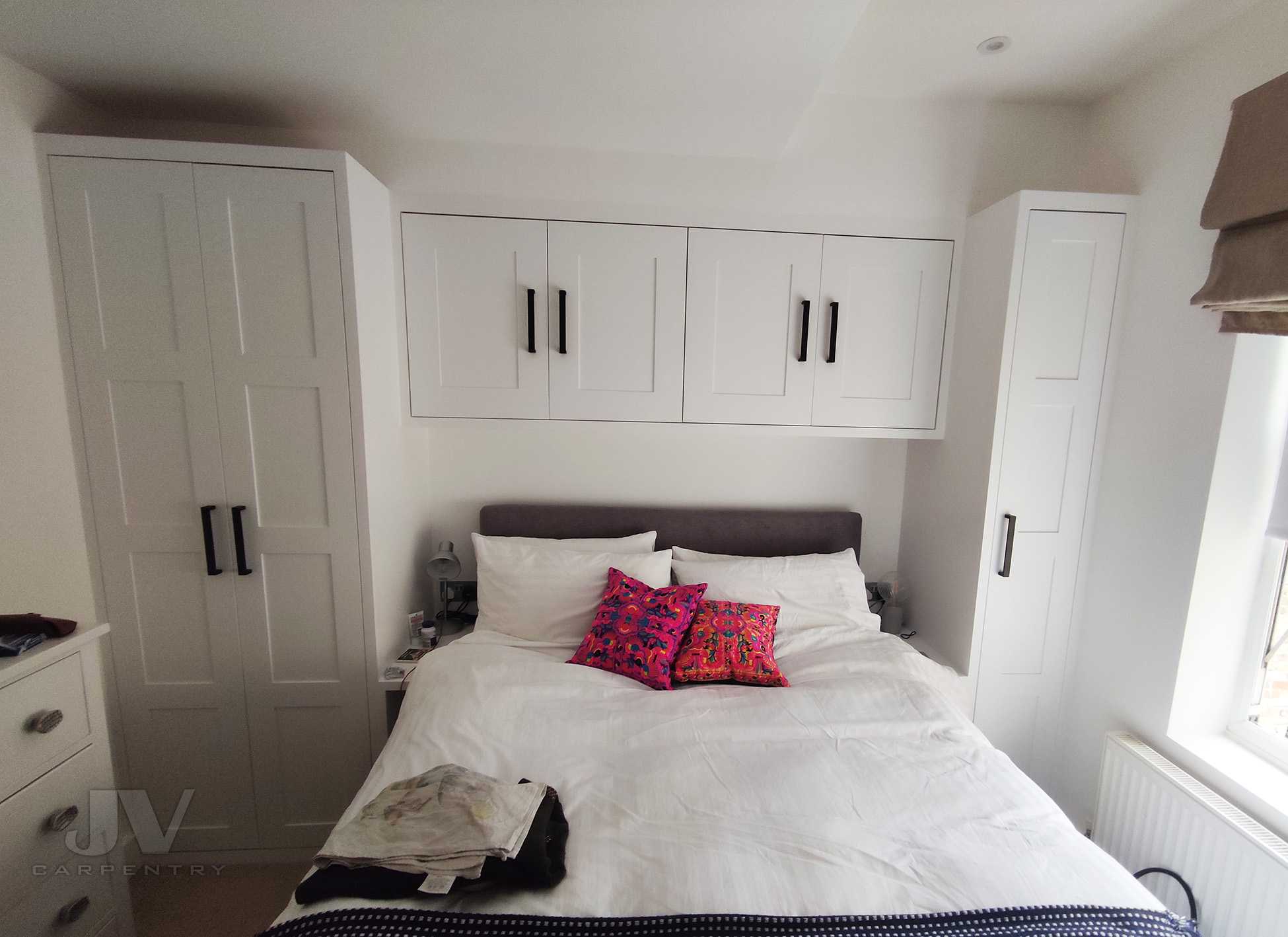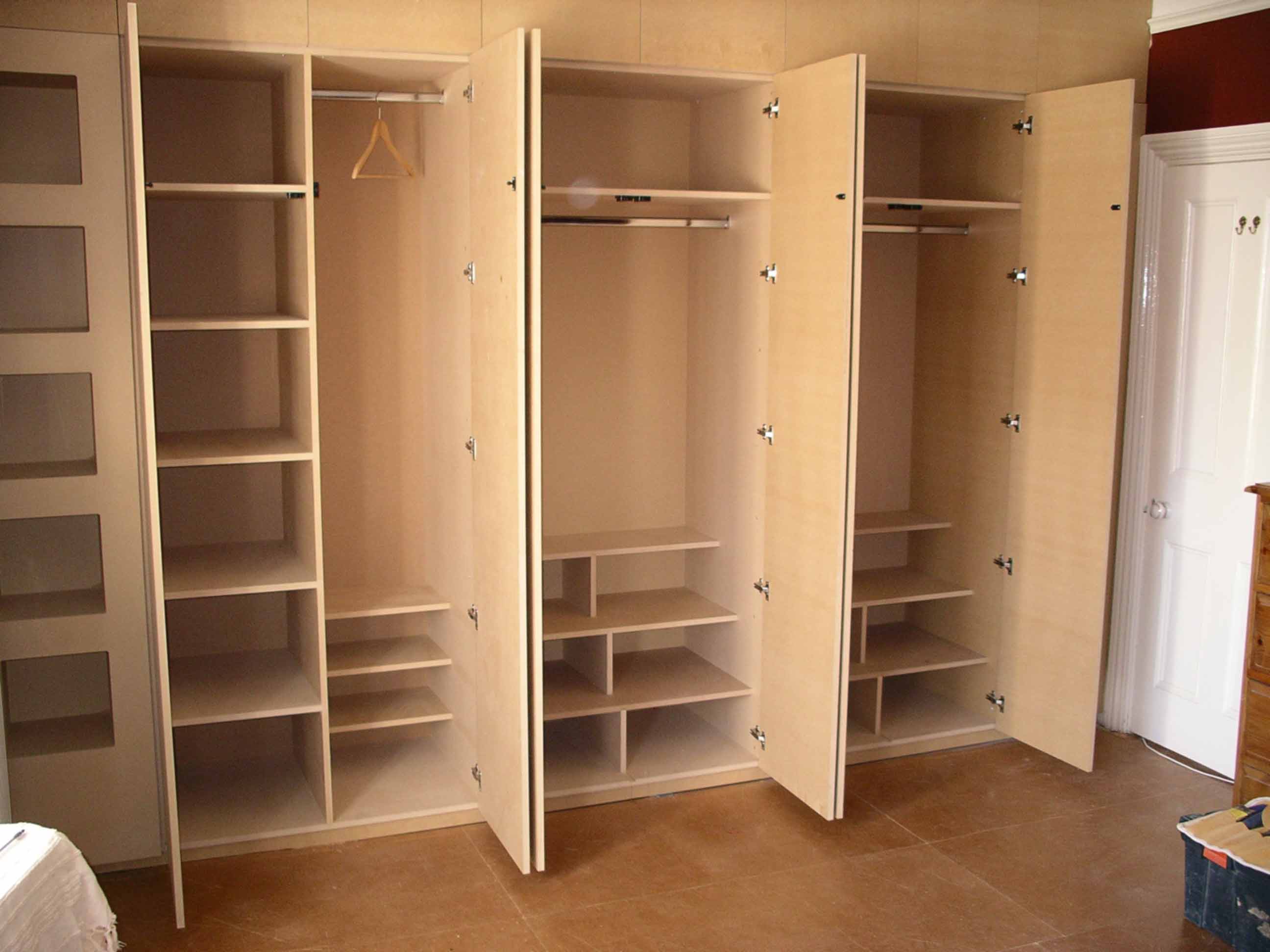Maximizing Space: Best Wardrobe Designs For Small Bedroom

In a small bedroom, every inch counts. Clever wardrobe design can make the difference between a cramped and cluttered space and a functional, organized haven. Here are some tips to help you maximize space in your small bedroom wardrobe:
Utilizing Vertical Space
Vertical space is often underutilized in small bedrooms. By taking advantage of the height, you can create a wardrobe that feels larger and more accommodating.
- Install shelves to the ceiling: This allows you to store items that are not frequently used, freeing up space in lower shelves for everyday items.
- Use stackable bins and containers: These are perfect for storing small items like socks, underwear, and accessories, maximizing vertical space within shelves and drawers.
- Consider a wardrobe with a loft: This provides additional storage space above the main wardrobe, ideal for storing items you don’t need frequent access to.
Multi-Functional Furniture
Combining storage with seating is a great way to make the most of limited space.
- Ottoman with storage: These versatile pieces offer a comfortable seat and hidden storage for blankets, pillows, or off-season clothes.
- Bed with built-in storage: Choose a bed with drawers underneath or a lift-up base to store items that would otherwise take up valuable floor space.
- Folding chairs with storage compartments: These chairs provide seating when needed and can be easily folded away when not in use, offering additional storage for smaller items.
Incorporating Mirrors
Mirrors can create the illusion of a larger space by reflecting light and making the room feel more expansive.
- Place a mirror on the back of the wardrobe door: This reflects light and makes the room appear larger.
- Use a full-length mirror on the wall: This not only helps with dressing but also adds a sense of depth to the room.
- Consider a mirrored wardrobe door: This is a stylish and practical way to maximize space and create an illusion of a larger room.
Open Shelving
Open shelving can make a small bedroom feel more spacious by allowing light to flow freely and reducing visual clutter.
- Use open shelves for displaying decorative items: This can add visual interest to the room without taking up too much space.
- Store frequently used items on open shelves: This allows for easy access and keeps the items visible, preventing them from getting lost in the back of a closed wardrobe.
- Use baskets and containers to organize items on open shelves: This keeps the shelves looking tidy and helps to contain items.
Sliding Doors vs. Hinged Doors
Sliding doors are a space-saving option for wardrobes in small bedrooms, as they do not require additional space to swing open.
- Sliding doors maximize floor space: They eliminate the need for extra space to open the door, allowing you to place furniture closer to the wardrobe.
- Sliding doors are ideal for tight spaces: They are a great option for small bedrooms with limited floor space.
- Hinged doors can be more visually appealing: They offer a more traditional look and can be made with various materials and finishes.
Smart Storage Solutions

Transforming your small bedroom wardrobe into a well-organized haven is all about strategic planning and smart storage solutions. By optimizing space and implementing efficient organization techniques, you can create a clutter-free sanctuary where every item has its designated place.
Designing a Wardrobe Layout
The key to maximizing storage capacity lies in designing a wardrobe layout that prioritizes functionality and accessibility. A well-organized wardrobe should be divided into distinct zones for different types of clothing, accessories, and shoes.
Here’s a suggested layout for a small bedroom wardrobe:
* Hanging Zone: This is the largest zone, dedicated to hanging clothes. Divide this section into categories such as shirts, dresses, pants, and jackets. Consider using different types of hangers, like velvet hangers for delicate fabrics or cascading hangers for maximizing space.
* Folding Zone: This zone is ideal for storing folded items like t-shirts, sweaters, and pajamas. Utilize shelves or drawers to organize these items by category.
* Shoe Zone: This zone is for storing shoes. You can utilize shoe shelves, boxes, or over-the-door shoe organizers to keep your shoes neatly organized and easily accessible.
* Accessory Zone: This zone is for storing accessories like belts, scarves, hats, and jewelry. Utilize drawer organizers, trays, or small containers to separate and organize these items.
Organizing Accessories, Shoes, and Seasonal Items
A well-organized wardrobe goes beyond just clothes; it includes efficient storage for accessories, shoes, and seasonal items.
* Accessories: Utilize drawer organizers, trays, or small containers to keep accessories like belts, scarves, hats, and jewelry neatly organized and easily accessible. You can also use hooks or wall-mounted organizers to hang scarves, hats, and jewelry.
* Shoes: To keep shoes organized, utilize shoe shelves, boxes, or over-the-door shoe organizers. Store seasonal shoes in boxes or bins and label them clearly for easy retrieval.
* Seasonal Items: Seasonal items, like winter coats or summer dresses, can be stored in vacuum-sealed bags or clear storage bins. Label these containers clearly and store them in a designated area of your wardrobe or under your bed.
Maximizing Efficiency with Dividers, Organizers, and Containers
Dividers, drawer organizers, and hanging organizers are essential tools for maximizing wardrobe efficiency.
* Dividers: Use dividers in drawers to separate clothes into categories like t-shirts, sweaters, and pants. This helps you easily find what you’re looking for and prevents items from getting mixed up.
* Drawer Organizers: Drawer organizers are a great way to maximize space in drawers. They can be used to separate socks, underwear, and other small items.
* Hanging Organizers: Hanging organizers are a great way to store small items like scarves, belts, and jewelry. They can be hung on a rod in your wardrobe or on the back of a door.
Utilizing Storage Containers and Baskets for a Clutter-Free Wardrobe, Best wardrobe designs for small bedroom
Storage containers and baskets are versatile tools for organizing and decluttering your wardrobe.
* Storage Containers: Use clear storage containers to store seasonal items, shoes, or other items that you don’t need to access frequently. Label these containers clearly for easy identification.
* Baskets: Baskets are a great way to store folded clothes, accessories, or other small items. Choose baskets in different sizes and materials to suit your needs.
Aesthetically Pleasing

A small bedroom wardrobe doesn’t have to be a bland storage space. It can be a beautiful and functional addition to your room, reflecting your personal style and enhancing the overall aesthetic. The key is to strike a balance between style and functionality, maximizing space while creating a visually appealing and inviting atmosphere.
Wardrobe Styles for Small Bedrooms
The style of your wardrobe can significantly impact the overall look of your bedroom. Here’s a comparison of different wardrobe styles and their suitability for small spaces:
- Sliding Door Wardrobes: These are ideal for small bedrooms as they save space by eliminating the need for doors to swing open. Sliding doors come in various materials, colors, and designs, allowing for customization to match your bedroom decor.
- Mirrored Wardrobes: Mirrored doors create an illusion of more space, making your bedroom feel larger. They also reflect light, adding brightness and depth to the room. However, be mindful of the placement to avoid glare.
- Built-in Wardrobes: Built-in wardrobes are custom-made to fit your space perfectly, maximizing storage capacity. They blend seamlessly with the room’s architecture, creating a unified and cohesive look.
- Freestanding Wardrobes: While freestanding wardrobes offer flexibility in placement, they can take up more floor space than built-in or sliding door wardrobes. However, they are a good option for renters or those who prefer a more movable solution.
Color and Lighting for Visual Appeal
Color and lighting play a crucial role in creating a visually appealing and functional wardrobe space.
- Light Colors: Light colors, such as white, cream, or pastels, can make a small wardrobe appear larger and brighter. They also create a sense of spaciousness and airiness.
- Dark Colors: Dark colors can add drama and sophistication to a small wardrobe. However, they can also make the space feel smaller. If using dark colors, consider incorporating light accents to balance the look.
- Lighting: Proper lighting is essential for illuminating the wardrobe interior and making it easier to find clothes. Consider adding LED strips inside the wardrobe for optimal visibility.
Incorporating Personal Style
Your wardrobe should reflect your personality and style. Here are some design ideas for adding a personal touch:
- Decorative Hardware: Choose handles, knobs, and pulls that complement your bedroom’s style. You can opt for modern, rustic, or traditional designs to match your preference.
- Wallpaper or Paint: Add a touch of personality by using wallpaper or paint on the inside of your wardrobe doors. This can create a unique and eye-catching feature.
- Fabric Inserts: Incorporate fabric inserts in the doors or shelves to add a soft and luxurious touch. Choose fabrics that complement your bedroom’s color scheme and style.
- Mirror Placement: Strategically placed mirrors can enhance the visual appeal and create a sense of depth. Consider adding a full-length mirror to the inside of the wardrobe door.
Materials and Finishes for Visual Enhancement
The choice of materials and finishes can significantly enhance the visual appeal of a small bedroom wardrobe.
- Wood: Wood is a classic and timeless material that adds warmth and sophistication to any wardrobe. Consider using oak, cherry, or walnut for a rich and elegant look.
- Metal: Metal finishes, such as chrome, brushed nickel, or brass, can create a modern and sleek look. They also add a touch of glamour and sophistication.
- Glass: Glass doors or shelves can add a touch of elegance and create a sense of spaciousness. Consider using frosted glass for privacy or clear glass for a modern and airy look.
- Laminate: Laminate is a durable and affordable material that comes in various colors and finishes. It is a practical choice for high-traffic areas.
Coordinating Wardrobe Design with Bedroom Décor
Creating a cohesive and stylish look requires coordinating the wardrobe design with the overall bedroom décor.
- Color Scheme: Choose wardrobe colors and finishes that complement the bedroom’s color scheme. This creates a sense of unity and visual harmony.
- Style: Select a wardrobe style that aligns with the bedroom’s overall style, whether it’s modern, traditional, or eclectic.
- Furniture: Ensure the wardrobe complements other furniture pieces in the room, such as the bed, nightstands, and dresser.
- Accessories: Use decorative accessories, such as throw pillows, rugs, and artwork, to tie the wardrobe design into the overall bedroom aesthetic.
